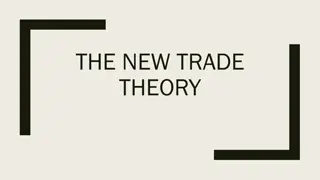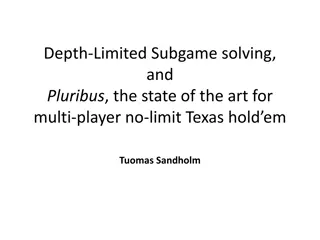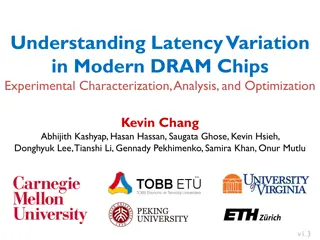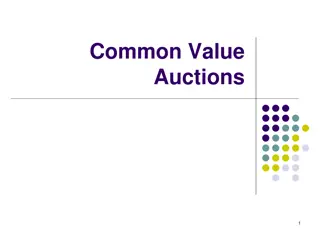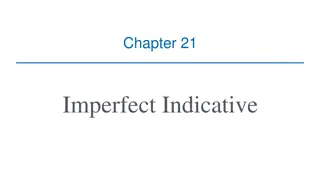
Market Power in Managerial Economics: Insights and Measurements
Explore the concept of market power and its significance in managerial decision-making. Learn about monopoly, measurement methods, Lerner index, and barriers to entry shaping firms' market power. Understand how demand elasticity, substitutes, and entry barriers influence a firm's ability to set prices and earn profits.
Download Presentation

Please find below an Image/Link to download the presentation.
The content on the website is provided AS IS for your information and personal use only. It may not be sold, licensed, or shared on other websites without obtaining consent from the author. If you encounter any issues during the download, it is possible that the publisher has removed the file from their server.
You are allowed to download the files provided on this website for personal or commercial use, subject to the condition that they are used lawfully. All files are the property of their respective owners.
The content on the website is provided AS IS for your information and personal use only. It may not be sold, licensed, or shared on other websites without obtaining consent from the author.
E N D
Presentation Transcript
BEC 30325 Managerial Economics Managerial Decisions for Firms with Market Power
Market Power Ability of a firm to raise price without losing all its sales Any firm that faces downward sloping demand has market power Gives firm ability to raise price above average cost & earn economic profit (if demand & cost conditions permit)
Monopoly Single firm Produces & sells a good or service for which there are no close substitutes New firms are prevented from entering market because of a barrier to entry
Measurement of Market Power Degree of market power inversely related to price elasticity of demand The less elastic the firm s demand, the greater its degree of market power The fewer close substitutes for a firm s product, the smaller the elasticity of demand (in absolute value) & the greater the firm s market power When demand is perfectly elastic (demand is horizontal), the firm has no market power
Measurement of Market Power Lerner index measures proportionate amount by which price exceeds marginal cost: Equals zero under perfect competition Increases as market power increases Also equals 1/E, which shows that the index (& market power), vary inversely with elasticity The lower the elasticity of demand (absolute value), the greater the index & the degree of market power P MC P = = Lerner index
Measurement of Market Power If consumers view two goods as substitutes, cross-price elasticity of demand (EXY) is positive The higher the positive cross-price elasticity, the greater the substitutability between two goods, & the smaller the degree of market power for the two firms
Barriers to Entry Entry of new firms into a market erodes market power of existing firms by increasing the number of substitutes A firm can possess a high degree of market power only when strong barriers to entry exist Conditions that make it difficult for new firms to enter a market in which economic profits are being earned
Common Entry Barriers Economies of scale When long-run average cost declines over a wide range of output relative to demand for the product, there may not be room for another large producer to enter market Barriers created by government Licenses, exclusive franchises
Common Entry Barriers Essential input barriers One firm controls a crucial input in the production process Brand loyalties Strong customer allegiance to existing firms may keep new firms from finding enough buyers to make entry worthwhile
Common Entry Barriers Consumer lock-in Potential entrants can be deterred if they believe high switching costs will keep them from inducing many consumers to change brands Network externalities Occur when benefit or utility of a product increases as more consumers buy & use it Make it difficult for new firms to enter markets where firms have established a large base or network of buyers
Demand & Marginal Revenue for a Monopolist Market demand curve is the firm s demand curve Monopolist must lower price to sell additional units of output Marginal revenue is less than price for all but the first unit sold When MR is positive (negative), demand is elastic (inelastic) For linear demand, MR is also linear, has the same vertical intercept as demand, & is twice as steep
Demand & Marginal Revenue for a Monopolist
Short-Run Profit Maximization for Monopoly Monopolist will produce where MR = SMC as long as TR at least covers the firm s total avoidable cost (TR TVC) Price for this output is given by the demand curve If TR < TVC (or, equivalently, P < AVC) the firm shuts down & loses only fixed costs If P > ATC, firm makes economic profit If ATC > P > AVC, firm incurs a loss, but continues to produce in short run
Short-Run Profit Maximization for Monopoly
Short-Run Loss Minimization for Monopoly
Long-Run Profit Maximization for Monopoly Monopolist maximizes profit by choosing to produce output where MR = LMC, as long as P LAC Will exit industry if P < LAC Monopolist will adjust plant size to the optimal level Optimal plant is where the short-run average cost curve is tangent to the long-run average cost at the profit-maximizing output level
Long-Run Profit Maximization for Monopoly
Profit-Maximizing Input Usage Profit-maximizing level of input usage produces exactly that level of output that maximizes profit
Profit-Maximizing Input Usage Marginal revenue product (MRP) MRP is the additional revenue attributable to hiring one more unit of the input TR MRP = = = = MR MP L When producing with a single variable input: Employ amount of input for which MRP= input price Relevant range of MRP curve is downward sloping, positive portion, for which ARP > MRP
Profit-Maximizing Input Usage For a firm with market power, profit- maximizing conditions MRP = wand MR = MCare equivalent Whether Q or L is chosen to maximize profit, resulting levels of input usage, output, price, & profit are the same
Monopolistic Competition Large number of firms sell a differentiated product Products are close (not perfect) substitutes Market is monopolistic Product differentiation creates a degree of market power Market is competitive Large number of firms, easy entry
Monopolistic Competition Short-run equilibrium is identical to monopoly Unrestricted entry/exit leads to long-run equilibrium Attained when demand curve for each producer is tangent to LAC At equilibrium output, P = LAC and MR = LMC
Short-Run Profit Maximization for Monopolistic Competition
Long-Run Profit Maximization for Monopolistic Competition
Implementing the Profit-Maximizing Output & Pricing Decision Step 1: Estimate demand equation Use statistical techniques from Chapter 7 Substitute forecasts of demand-shifting variables into estimated demand equation to get Q = a + bP = = + + + + Where a' a cM dP R
Implementing the Profit-Maximizing Output & Pricing Decision Step 2: Find inverse demand equation Solve for P = + = + a' b 1 b = = + + P Q A BQ a' b 1 b = = + + + + = = = = , a' a cM dP , A B Where and R
Implementing the Profit-Maximizing Output & Pricing Decision Step 3: Solve for marginal revenue When demand is expressed as P = A + BQ, marginal revenue is a' b 2 b = = + + = = + + MR A BQ Q 2 Step 4: Estimate AVC & SMC Use statistical techniques from Chapter 10 AVC = a + bQ + cQ2 SMC = a + 2bQ + 3cQ2
Implementing the Profit-Maximizing Output & Pricing Decision Step 5: Find output where MR = SMC Set equations equal & solve for Q* The larger of the two solutions is the profit- maximizing output level Step 6: Find profit-maximizing price Substitute Q* into inverse demand P* = A + BQ* Q* & P*are only optimal if P AVC
Implementing the Profit-Maximizing Output & Pricing Decision Step 7: Check shutdown rule Substitute Q*into estimated AVC function AVC* = a + bQ* + cQ*2 If P* AVC*,produce Q* units of output & sell each unit for P* If P* < AVC*,shut down in short run
Implementing the Profit-Maximizing Output & Pricing Decision Step 8: Compute profit or loss Profit = TR TC = P x Q* - AVC x Q* - TFC = (P AVC)Q* - TFC If P < AVC, firm shuts down & profit is - TFC
Multiple Plants If a firm produces in 2 plants, A & B Allocate production so MCA = MCB Optimal total output is that for which MR = MCT For profit-maximization, allocate total output so that MR = MCT = MCA = MCB


